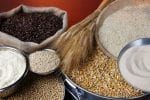
Farm supply co-ops and other ag retailers are seeing their accounts receivable balances on the rise and are facing challenges as a result. A new report out from Cobank says retailers are having to adjust to tougher financial conditions because of the current ag commodity cycle. This is a direct result of low commodity prices that have knocked down farm incomes and tightened up on-farm cash flows. The ag industry has seen a downturn in fertilizer prices as well as mergers in the seed and fertilizer industries. “The drop in farm income over the past three season is the biggest we’ve seen since the Great Depression,” said Tyler Ehmke, a Cobank senior economist. He said accounts receivable balances at ag retailers across the country have jumped 11 percent this year and will likely go higher as farmers continue to struggle with their cash flow balances. Fertilizers usually account for half the revenue stream for ag retailers, but those prices are falling as well, making it difficult to maintain positive margins.
From the National Association of Farm Broadcasting news service.
From: Cobank
Farm Supply Co-ops and Other Ag Retailers Face Tighter Margins, Cyclical Challenges
Accounts receivable climb as farm income declines
Accounts receivable at farm supply co-ops and other ag retailers are growing and so are their challenges, according to a new report from CoBank. After an extended run of impressive financial performances, retailers are adjusting to a tougher economic environment accompanying the down-phase of the current ag commodity cycle.
Current headwinds are directly related to a sharp decline in commodity prices that has reduced farm income and tightened farm cash flows. A downturn in fertilizer prices and a spate of mergers and acquisitions in the seed and fertilizer industry have aligned to create adversity for ag retailers going forward.
“The drop in farm income over the past three years is the steepest decrease since the Depression,” says Tanner Ehmke, CoBank senior economist covering, the grains, oilseeds and ethanol, and farm supply sectors. “Producer incomes have fallen more than 50 percent from 2013 to today and their debt-toincome ratio is on the rise. Not surprisingly, total accounts receivable for ag retailers posted an 11 percent gain for 2015, and that’s expected to grow in the year ahead due to ongoing farmer cash flow challenges.”
Farmers stretching existing credit lines, cutting costs and reducing pre-pay practices have retailers unsure about demand opportunities. Being more price sensitive creates additional competitive pressures on ag retailers as farmers explore new supplier sources in search of ways to lower expenses.
Fertilizer sales usually account for about half of ag retailers’ total revenue, so falling prices have made it difficult for them to maintain positive margins. Forecasts call for the slide to continue through 2017 as commodity values remain under significant pressure from abundant supplies in the United States and throughout the world.
Retailers are searching for every edge to maintain fertilizer sales and margins, forging new relationships and alliances with wholesalers where possible, while offering value-added services as a way to retain existing customers or entice new ones.
“The biggest challenge for ag retailers going forward will be to manage inventory to sync with demand,” notes Ehmke.
Lastly, seed and crop protection companies are experiencing a new wave of consolidation, creating ambiguity and insecurity about product offerings, prices and competition in the industry. Ag retailers are keenly concerned that with reduced competition, there could be fewer seed and chemical brands to choose from, as well as reduced innovation in the industry that could result in fewer product offerings in the future. The consolidation wave could also leave ag retailers with less bargaining power, potentially reducing their ability to negotiate prices or rebates on volume sales.
Furthermore, many ag retailers face rising operating expenses—including payrolls and benefits—and higher depreciation costs following years of infrastructure investment and new facilities. While these upgrades were necessary, they now contribute to a drag on profits.
“On a positive note, it appears the drop in net farm income is slowing,” notes Ehmke. This is based off USDA’s projections for 2016 that call for a 2% reduction in net farm income year-over-year, compared to 2015 when net farm income dropped 38% year-over-year and 2014 when it dropped 27 percent.
“For ag retailers, the questions are, ‘What are you going to do to get through this rough patch? How will you adapt your cost structure and industry relationships while serving your customers as that valued partner?’” he asks.
“When we do get through this cycle, those businesses that have been able to adapt stand to benefit from a significant payout on the other side,” Ehmke concludes.
A brief video synopsis of the report, “Ag Retailers – Cyclical Challenges Ahead” is available on CoBank’s YouTube page. The full report is available to media upon request.
About CoBank
CoBank is a $125 billion cooperative bank serving vital industries across rural America. The bank provides loans, leases, export financing and other financial services to agribusinesses and rural power, water and communications providers in all 50 states. The bank also provides wholesale loans and other financial services to affiliated Farm Credit associations serving farmers, ranchers and other rural borrowers in 23 states around the country.
CoBank is a member of the Farm Credit System, a nationwide network of banks and retail lending associations chartered to support the borrowing needs of U.S. agriculture, rural infrastructure and rural communities. Headquartered outside Denver, Colorado, CoBank serves customers from regional banking centers across the U.S. and also maintains an international representative office in Singapore.
For more information about CoBank, visit the bank’s web site at www.cobank.com










